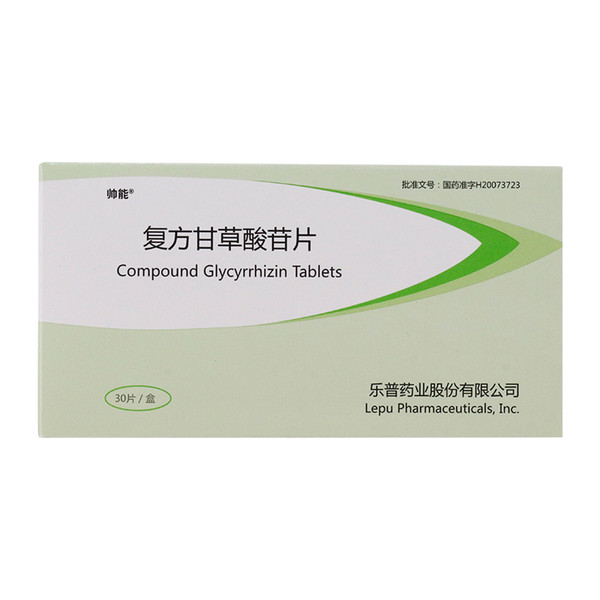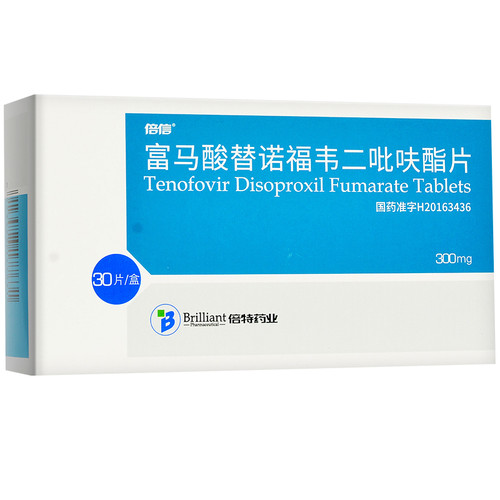Product Overview
Generic name: Compound Glycyrrhizin Tablets
Chinese Pinyin: FuFangGanCaoSuanGanPian
English name: Compound Glycyrrhizin Tabletsa
Product name: Shuaineng
Ingredients: This product is a compound preparation, and its components are: each tablet contains 25mg glycyrrhizin, 25mg glycine and 25mg methionine.
Properties: White sugar-coated tablets, white or almost white after removing the coating.
Indications: Treat chronic liver disease and improve abnormal liver function. It can be used to treat eczema, dermatitis and alopecia areata.
Specification: 25mg*30 tablets/box
Dosage: 2-3 tablets once for adults, 1 tablet once for children, 3 times a day, orally after meals. It can be increased or decreased according to age and symptoms.
Adverse reactions: The actual frequency of adverse reactions in the use of this preparation has not been investigated. Important adverse reactions Pseudoaldosteronism (frequency unknown): Hypokalemia, increased blood pressure, sodium and fluid retention, edema, decreased urine output, weight gain and other symptoms of pseudoaldosteronism can occur. Therefore, during the medication process, Pay attention to observation (serum potassium value, etc.) and stop the administration if abnormal conditions are found. In addition, symptoms of rhabdomyolysis such as feeling of weakness, weak muscle strength, muscle pain, limb spasm, paralysis, etc. may also occur. When CK (CPK) is found to be elevated, and blood and urine myoglobin is elevated, the drug should be stopped and given Dispose of properly.
Contraindications: (The following patients should not be administered)
1. Patients with aldosteronism, myopathy, hypokalemia (can aggravate hypokalemia and hypertension).
2. Patients with end-stage liver cirrhosis who have a tendency to increase blood ammonia (the metabolite of methionine contained in the preparation can inhibit urea synthesis and reduce the ability to handle ammonia).
Note: 1. Cautious administration: Caution should be given to elderly patients (the incidence of hypokalemia in elderly patients is high) (refer to medication for elderly patients).
2. General precautions: Since this preparation contains glycyrrhizin, it can increase the content of glycyrrhizin in the body when it is used in combination with other licorice preparations, which is prone to pseudo-aldosteronism, so attention should be paid.
Drug interactions: Hypokalemia may occur when loop diuretics, diuretic acid, furosemide and other thiazides and antihypertensive diuretics such as triclosan and chlorthalidone are used at the same time. Special attention should be paid to blood potassium testing.
Pharmacology and Toxicology: 1. Anti-inflammatory effect. (1) Anti-allergic effect. (2) Obstruction to arachidonic acid metabolism enzymes. 2. Immune regulation. 3. Inhibition of experimental liver cell damage. 4. Inhibit virus proliferation and inactivate the virus. (Two non-clinical toxicological studies) 5. Acute toxicity: oral administration of this product to rats is 12g (48 tablets) per kilogram of body weight. There are no deaths, so LD50 cannot be calculated. LD50>12g (48 tablets) 6. Teratogenic effect.
Pharmacokinetics: 1. The pharmacokinetic blood concentration in the human body. When 4 tablets (containing glycyrrhizin 100mg) of this agent are administered orally to a normal person, although the blood glycyrrhizin concentration has not yet obtained an accurate error range, there is The data shows that the concentration of glycyrrhizin hydrolysate glycyrrhetinic acid has two peaks after administration, the first appears in 1-4 hours after administration, and the second appears in 10-24 hours. (Note) The maximum dosage approved for this preparation is 3 tablets (containing 75 mg of glycyrrhizin). Urinary excretion: Glycyrrhizin and glycyrrhetinic acid were not detected in the urine within 10 hours after oral administration of this preparation. 2. Pharmacokinetics in animals (reference), absorption: oral administration of 3H glycyrrhizin to mice, the blood concentration reached the highest value after 1 hour, then slowly decreased, and decreased to 59% of the highest value after 6 hours. After 12 hours, the blood concentration increased again and then gradually decreased. Distribution: oral administration of 3H glycyrrhizin to the mice, the organs were removed 10 minutes later, you can see that all the organs contain glycyrrhizin. The most distributed organ is the liver, which reaches the highest value 2 hours after administration, with a 3H value of 2.8%, followed by the order of distribution: lung, kidney, heart, adrenal gland.
Medication for pregnant women and lactating women: Pregnant women and lactating women should carefully administer the drug after weighing the advantages of treatment over the disadvantages.
Pediatric medication: 1 tablet once a time for children, orally after meals 3 times a day.
Medication for elderly patients: Based on clinical application experience, elderly people are prone to adverse reactions to hypokalemia. Therefore, they need to be cautiously administered on the basis of close observation
Storage: Store at room temperature.
Packaging: PTP aluminum foil for pharmaceutical packaging, blister packaging of pharmaceutical PVC rigid tablets, 10 pieces/board, 30 pieces/box
Validity period: 24 months
Executive standard: Standard YBH03002007 of the State Food and Drug Administration
Approval number: National Pharmaceutical Standard H20073723
Company Name: Lepu Pharmaceutical Co., Ltd.









